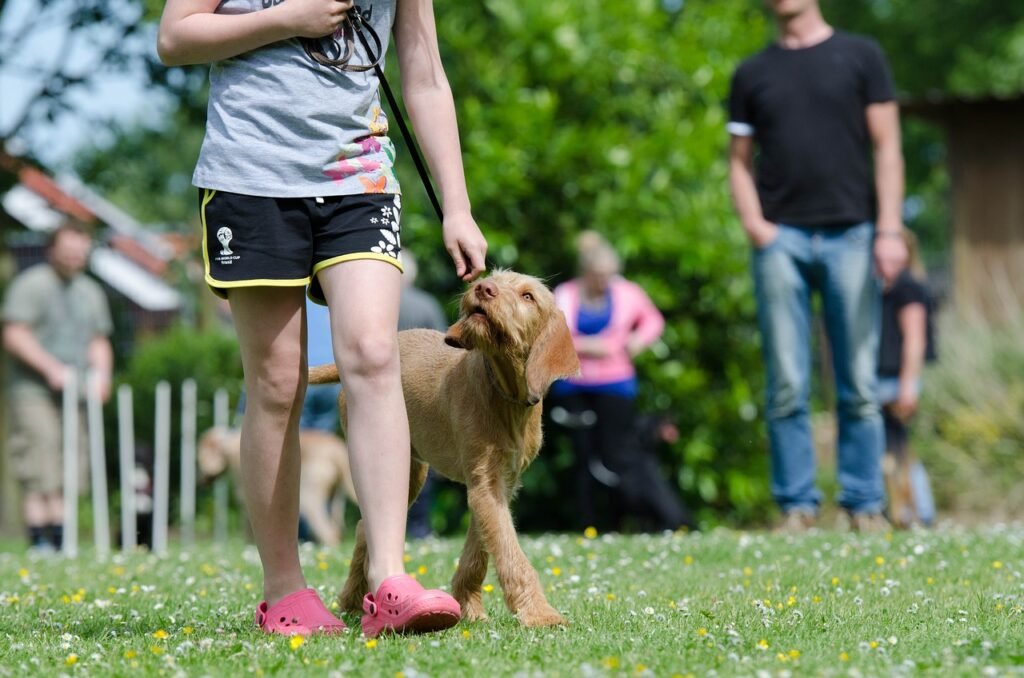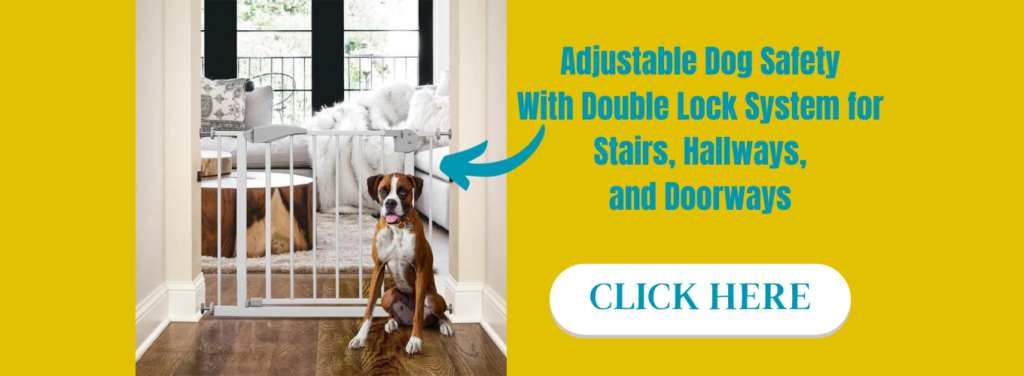
Positive dog training is a powerful and effective approach to training your furry friend. By focusing on positive reinforcement and rewards, this method encourages good behavior and strengthens the bond between you and your dog. In this article, we will explore the principles of positive dog training, the benefits it offers, and address common misconceptions. We will also provide guidance on getting started with positive training, teaching essential commands, addressing behavioral issues, and introducing advanced techniques. Here are the key takeaways from this article:
Key Takeaways
- Positive dog training focuses on positive reinforcement and rewards to encourage good behavior.
- It strengthens the bond between you and your dog.
- Choosing the right training methods and creating a positive training environment are crucial for success.
- Teaching essential commands such as sit, stay, and lie down is fundamental.
- Addressing behavioral issues like separation anxiety and aggression can be effectively managed through positive training.
The Principles of Positive Dog Training
Positive dog training is based on the principles of rewarding desired behaviors and avoiding punishment. This approach focuses on positive reinforcement, which involves rewarding your dog with treats, praise, or play when they exhibit the desired behavior. By using positive reinforcement, you can motivate your dog to repeat the behavior and strengthen the bond between you and your furry friend.
In positive dog training, it is important to avoid punishment or any form of physical or verbal aggression. Instead, the emphasis is on redirecting unwanted behaviors and teaching alternative behaviors through positive reinforcement.
To better understand the principles of positive dog training, refer to the following table:
| Principle | Description |
|---|---|
| Positive Reinforcement | Rewarding desired behaviors with treats, praise, or play |
| Avoidance of Punishment | Avoiding physical or verbal aggression |
By following these principles, you can create a positive training environment for your dog and achieve effective results.

The Benefits of Positive Dog Training
Positive dog training has numerous benefits for both dogs and their owners. One key benefit is that it helps to strengthen the bond between the dog and the owner. By using positive reinforcement techniques, such as rewards and praise, dogs learn to associate good behavior with positive outcomes, which in turn strengthens their trust and connection with their owner.
In addition to strengthening the bond, positive dog training also promotes better communication between dogs and their owners. Through positive reinforcement, dogs learn to understand and respond to commands more effectively, leading to improved obedience and cooperation. This clear communication enhances the overall relationship and makes training sessions more enjoyable for both the dog and the owner.
Furthermore, positive dog training methods are known to be more humane and gentle compared to aversive training techniques. By focusing on rewarding desired behaviors rather than punishing unwanted behaviors, positive training creates a positive and safe learning environment for dogs. This approach not only reduces stress and anxiety in dogs but also fosters a positive emotional state, leading to happier and more well-adjusted pets.
To summarize, the benefits of positive dog training include strengthening the bond between the dog and the owner, improving communication and obedience, and promoting a humane and positive learning environment.
Common Misconceptions about Positive Dog Training
There are several common misconceptions about positive dog training that can hinder its effectiveness. One misconception is that positive training methods are not as effective as punishment-based methods. However, numerous studies have shown that positive reinforcement is a highly effective way to train dogs and can lead to long-lasting behavior change.
Another misconception is that positive training means never saying ‘no’ to your dog. While positive training focuses on rewarding desired behaviors, it also involves redirecting and managing unwanted behaviors. By providing clear boundaries and consistent guidance, positive training can effectively address behavioral issues.
It is also important to note that positive training does not mean being permissive or spoiling your dog. Positive training involves setting clear expectations and teaching your dog appropriate behaviors through positive reinforcement.
In summary, positive dog training is a highly effective and humane approach to training dogs. It is based on the principles of positive reinforcement and focuses on rewarding desired behaviors while redirecting and managing unwanted behaviors. By understanding and debunking these common misconceptions, dog owners can fully embrace the power of positive training for their furry companions.
Getting Started with Positive Dog Training
Choosing the Right Training Methods
When it comes to choosing the right training methods for your dog, it’s important to consider their individual needs and temperament. Positive reinforcement is a highly effective approach that focuses on rewarding desired behaviors rather than punishing unwanted ones. By using rewards such as treats, praise, and play, you can motivate your dog to learn and engage in training sessions.
It’s also worth noting that positive training methods are backed by scientific research and have been proven to be more successful in the long run. Studies have shown that dogs trained using positive reinforcement are more obedient, have better social skills, and are less likely to develop behavioral problems.
To help you make an informed decision, here is a comparison table of different training methods:
| Training Method | Description |
|---|---|
| Positive Reinforcement | Focuses on rewarding desired behaviors |
| Punishment-based | Relies on aversive techniques to discourage unwanted behaviors |
| Dominance-based | Emphasizes establishing dominance over the dog |

Remember, choosing the right training method is crucial for building a strong bond with your dog and ensuring their well-being. It’s important to consult with a professional dog trainer or behaviorist to determine the most suitable approach for your furry friend.
Creating a Positive Training Environment
Creating a positive training environment is crucial for the success of your dog’s training. By providing a calm and supportive atmosphere, you can help your dog feel safe and motivated to learn. One way to create a positive environment is by using positive reinforcement. This involves rewarding your dog with treats, praise, or play whenever they exhibit the desired behavior. Consistency is key in positive reinforcement, as it helps your dog understand what is expected of them.
To further enhance the training experience, consider implementing a structured training schedule. This will help establish a routine and provide your dog with a sense of predictability. Additionally, minimize distractions during training sessions to ensure your dog can focus on the task at hand.
Remember, a positive training environment sets the foundation for effective and enjoyable training sessions with your furry friend.
Building a Strong Bond with Your Dog
Building a strong bond with your dog is essential for a successful positive training experience. Spending quality time with your furry friend is key to developing a deep connection. Whether it’s going for long walks, playing fetch, or simply cuddling on the couch, these activities help strengthen the bond between you and your dog.
To further enhance your bond, positive reinforcement is crucial. Rewarding your dog with treats, praise, and affection when they exhibit desired behaviors not only reinforces their training but also builds trust and strengthens your relationship.
In addition to spending time together and using positive reinforcement, it’s important to establish clear communication with your dog. Consistency in your commands and expectations will help your dog understand what is expected of them. This clear communication will not only make training more effective but also deepen the bond between you and your dog.
To summarize, building a strong bond with your dog involves spending quality time together, using positive reinforcement, and establishing clear communication. By doing so, you will create a solid foundation for successful positive dog training.
Essential Commands for Positive Dog Training
Teaching Sit, Stay, and Lie Down
Teaching your dog basic commands like sit, stay, and lie down is an essential part of positive dog training. These commands not only help establish control and discipline, but they also provide a foundation for more advanced training.
To teach your dog these commands, start by using positive reinforcement techniques. Reward your dog with treats or praise when they successfully perform the desired behavior. Consistency is key, so be sure to use the same verbal cues and hand signals each time.
Here is a simple step-by-step guide to teaching sit, stay, and lie down:
- Sit: Hold a treat close to your dog’s nose and slowly move it upwards. As their head follows the treat, their bottom will naturally lower into a sitting position. Once they are sitting, say the word ‘sit’ and give them the treat.
- Stay: After your dog has mastered the sit command, you can introduce the stay command. Start by telling your dog to sit, then take a step back. If they stay in the sitting position, reward them with a treat and praise. Gradually increase the distance and duration of the stay.
- Lie Down: To teach your dog to lie down, start with the sit command. Hold a treat in your hand and lower it to the ground in front of them. As they follow the treat, their body will naturally lower into a lying down position. Once they are lying down, say the word ‘lie down’ and give them the treat.
Remember, patience and positive reinforcement are key when teaching these commands. With consistent training and practice, your dog will soon master sit, stay, and lie down.
Mastering Recall and Loose Leash Walking

Mastering recall and loose leash walking are essential skills for any dog owner. Recall is the ability to call your dog back to you, even in distracting environments. It is crucial for their safety and allows them to enjoy off-leash activities. Loose leash walking is teaching your dog to walk calmly beside you without pulling on the leash.
To master recall, start by practicing in a quiet, familiar environment. Use high-value treats and reward your dog every time they come to you when called. Gradually increase the level of distractions as your dog becomes more reliable. Consistency and positive reinforcement are key to success.
For loose leash walking, begin by teaching your dog to focus on you. Use treats or a clicker to reward them for walking beside you without pulling. If your dog starts to pull, stop walking and wait for them to come back to your side. Reward them when they do. Practice in different environments to generalize the behavior.
Remember, mastering recall and loose leash walking takes time and patience. Consistent training and positive reinforcement will help your dog become a well-behaved and happy companion.
Here is a bulleted list summarizing the key points:
- Recall is the ability to call your dog back to you, even in distracting environments.
- Loose leash walking is teaching your dog to walk calmly beside you without pulling on the leash.
- Practice recall in a quiet environment and gradually increase distractions.
- Use treats and positive reinforcement to reward your dog for coming when called.
- Teach loose leash walking by rewarding your dog for walking beside you without pulling.
- Stop walking if your dog pulls and wait for them to come back to your side.
- Consistency and positive reinforcement are essential for success.
Introducing Basic Obedience Commands
Teaching your dog basic obedience commands is an essential part of positive dog training. These commands provide the foundation for good behavior and help establish clear communication between you and your dog.
Sit: Teaching your dog to sit on command is one of the first obedience commands you should introduce. This command is useful in various situations, such as when you want your dog to stay calm or when you need them to sit before receiving a treat.
Stay: Once your dog has mastered the sit command, you can move on to teaching them to stay. This command is important for keeping your dog in one place, whether it’s during mealtime, when guests arrive, or when you need them to wait at the door.
Lie Down: The lie down command is another important obedience command. It helps to calm your dog and can be useful in situations where you want them to relax or when you need them to stay in a specific position for an extended period.
To ensure successful training, it’s important to use positive reinforcement techniques such as treats, praise, and rewards. Remember to be patient and consistent with your training sessions.
Here is a table summarizing the basic obedience commands:
| Command | Description |
|---|---|
| Sit | Dog sits down on command |
| Stay | Dog remains in one place |
| Lie Down | Dog lies down on command |
By teaching your dog these basic obedience commands, you are setting them up for success and creating a strong foundation for further training.
Addressing Behavioral Issues through Positive Dog Training
Dealing with Separation Anxiety
Separation anxiety is a common behavioral issue that many dogs experience when they are left alone. It can manifest in various ways, such as excessive barking, destructive chewing, or even self-harm. Addressing separation anxiety requires patience and understanding. One effective technique is to gradually desensitize your dog to your departures by starting with short periods of time and gradually increasing the duration. Creating a safe and comfortable space for your dog while you’re away can also help alleviate anxiety. Providing interactive toys or leaving a piece of clothing with your scent can provide comfort and distraction. Additionally, establishing a consistent routine can help reduce anxiety by giving your dog a sense of predictability and security.
Here are some strategies to help manage separation anxiety:
- Counter-conditioning: This involves changing your dog’s emotional response to being alone by associating it with positive experiences, such as treats or toys.
- Seek professional help: If your dog’s separation anxiety is severe or persistent, it may be beneficial to consult a professional dog trainer or behaviorist.
Remember, addressing separation anxiety requires time and effort, but with the right approach, you can help your dog feel more secure and confident when left alone.
Managing Aggression and Reactivity
Aggression and reactivity are common behavioral issues in dogs that can be effectively addressed through positive dog training techniques. Positive reinforcement is a key component in managing these behaviors, as it focuses on rewarding desired behaviors rather than punishing unwanted ones.
To manage aggression and reactivity in dogs, it is important to:
- Identify triggers: Understanding what triggers the aggressive or reactive behavior is crucial in addressing the issue. This can be done through careful observation and keeping a record of the situations that provoke the behavior.
- Implement desensitization and counterconditioning: These techniques involve gradually exposing the dog to the trigger in a controlled and positive manner, while rewarding calm and non-reactive behavior. This helps the dog associate the trigger with positive experiences.
- Provide mental and physical stimulation: Engaging the dog in activities that stimulate their mind and body can help reduce aggression and reactivity. This can include puzzle toys, interactive games, and regular exercise.
It is important to note that managing aggression and reactivity in dogs requires patience, consistency, and professional guidance. Seeking the help of a certified positive dog trainer or behaviorist can greatly assist in addressing these behavioral issues and ensuring the safety and well-being of both the dog and the people around them.

Correcting Unwanted Behaviors
Correcting unwanted behaviors is an essential aspect of positive dog training. By using positive reinforcement techniques, you can effectively address and modify your dog’s undesirable actions. One key strategy is to redirect your dog’s attention to a more appropriate behavior whenever they engage in unwanted actions. For example, if your dog starts chewing on furniture, you can redirect their attention to a chew toy or bone. This helps them understand what behaviors are acceptable and reinforces positive habits.
To further assist you in correcting unwanted behaviors, here is a table summarizing common behavioral issues and their corresponding positive training techniques:
| Behavioral Issue | Positive Training Technique |
|---|---|
| Jumping on people | Teaching ‘Sit’ command and rewarding calm behavior |
| Excessive barking | Using ‘Quiet’ command and rewarding silence |
| Pulling on leash | Teaching loose leash walking and rewarding good leash manners |
Remember, consistency and patience are key when correcting unwanted behaviors. It’s important to provide clear cues and rewards to reinforce positive actions and discourage negative ones.
In addition, here are some steps you can follow to effectively correct unwanted behaviors:
- Identify the specific behavior you want to correct.
- Determine the underlying cause of the behavior.
- Redirect your dog’s attention to a more appropriate behavior.
- Use positive reinforcement to reward desired behaviors.
- Consistently reinforce the desired behavior and discourage the unwanted behavior.
Lastly, it’s crucial to avoid punishment or harsh methods when correcting unwanted behaviors. Positive dog training focuses on building a strong bond with your dog and promoting their well-being. By using positive reinforcement and redirection techniques, you can effectively address and correct unwanted behaviors in a humane and effective manner.
Advanced Techniques in Positive Dog Training
Shaping and Capturing Behaviors
Shaping and capturing behaviors is a fundamental technique in positive dog training. By using positive reinforcement, trainers can shape a dog’s behavior by rewarding small steps towards the desired behavior. This method involves breaking down the desired behavior into smaller achievable actions and gradually reinforcing them. Patience and consistency are key when shaping behaviors, as it may take time for the dog to understand and perform the desired behavior.
To illustrate the effectiveness of shaping and capturing behaviors, here is a table showcasing the progress of a dog learning to fetch a ball:
| Session | Behavior Shaped |
|---|---|
| 1 | Sits on command |
| 2 | Moves towards the ball |
| 3 | Touches the ball with nose |
| 4 | Picks up the ball |
| 5 | Brings the ball back |
In addition to shaping, capturing behaviors can be used to reinforce spontaneous actions that align with the desired behavior. For example, if a dog naturally sits without a command, the trainer can capture that behavior by immediately rewarding it. This helps strengthen the desired behavior and encourages the dog to offer it more frequently.
Remember, shaping and capturing behaviors require clear communication, positive reinforcement, and a deep understanding of your dog’s capabilities and motivations.
Using Clicker Training for Precision
Clicker training is a powerful technique that can be used to achieve precise behaviors in dogs. By using a clicker as a marker for desired actions, trainers can communicate with their dogs in a clear and consistent manner. This method is particularly effective for shaping complex behaviors such as agility courses or obedience routines.
One way to use clicker training for precision is to break down the desired behavior into small steps. Each step is taught separately and reinforced with a click and a reward. Gradually, the steps are chained together until the dog can perform the behavior fluently.
In addition to shaping behaviors, clicker training can also be used to capture and reinforce natural behaviors. By clicking and rewarding a behavior that the dog offers spontaneously, trainers can strengthen and encourage that behavior.
To ensure the success of clicker training, it is important to use a consistent clicker sound and to follow up with a reward. The clicker should always be followed by a treat or a positive reinforcement to reinforce the association between the click and the reward.
Table: Steps for Clicker Training
| Step | Description |
|---|---|
| 1 | Introduce the clicker sound to the dog |
| 2 | Click and reward for simple behaviors |
| 3 | Break down complex behaviors into small steps |
| 4 | Chain the steps together |
| 5 | Capture and reinforce natural behaviors |
Clicker training is a versatile tool that can help trainers achieve precision and clarity in their dog’s behaviors. By following the principles of clicker training and using consistent reinforcement, trainers can unlock the full potential of positive dog training.

Implementing Positive Reinforcement Strategies
Implementing positive reinforcement strategies is a crucial aspect of successful dog training. Positive reinforcement involves rewarding your dog for desired behaviors, which encourages them to repeat those behaviors in the future. By using rewards such as treats, praise, and playtime, you can motivate your dog to learn and obey commands.
One effective way to implement positive reinforcement is through the use of a reward-based system. This involves identifying the specific behaviors you want to reinforce and choosing appropriate rewards to reinforce those behaviors. For example, if you want to teach your dog to sit, you can reward them with a treat every time they successfully sit on command.
In addition to treats, other rewards such as verbal praise and petting can also be used to reinforce positive behaviors. It’s important to find out what motivates your dog the most and use those rewards consistently to reinforce desired behaviors.
To ensure the success of positive reinforcement strategies, it’s essential to be consistent and patient. Consistency means rewarding your dog every time they exhibit the desired behavior, while patience is required as it may take time for your dog to understand and learn the commands.
Remember, positive reinforcement is a powerful tool in dog training that can help build a strong bond between you and your furry friend. By implementing these strategies, you can create a positive training environment and set your dog up for success.
Conclusion
Positive dog training is a powerful and effective method for teaching and shaping desired behaviors in dogs. By focusing on rewards, praise, and positive reinforcement, owners can create a strong bond with their furry friends and foster a harmonious relationship. This approach not only enhances the well-being and happiness of dogs but also promotes a safe and enjoyable environment for both the pet and the owner. So, let’s embrace the power of positive dog training and unlock the full potential of our canine companions!
Frequently Asked Questions

What is positive dog training?
Positive dog training is a training method that focuses on rewarding desired behaviors rather than punishing unwanted behaviors. It involves using positive reinforcement techniques such as treats, praise, and play to motivate and encourage dogs to learn and obey commands.
Is positive dog training effective?
Yes, positive dog training is highly effective. It has been proven to be a successful and humane way to train dogs. By using positive reinforcement, dogs are more motivated to learn and are more likely to repeat desired behaviors. It also helps in building a strong bond between the dog and the owner.
Can positive dog training be used for all dogs?
Yes, positive dog training can be used for all dogs regardless of their age, breed, or size. The principles of positive dog training can be applied to teach basic obedience commands, address behavioral issues, and even train dogs for advanced tasks and activities.
How long does it take to see results with positive dog training?
The time it takes to see results with positive dog training can vary depending on the dog’s age, temperament, and previous training experiences. Some dogs may show improvement within a few training sessions, while others may take longer. Consistency, patience, and positive reinforcement are key to achieving desired results.
Are there any disadvantages to positive dog training?
There are no major disadvantages to positive dog training. However, it requires time, effort, and consistency from the owner. It may take longer to address certain behavioral issues compared to aversive training methods. Additionally, some dogs may require additional motivation or different training techniques based on their individual needs.
Can positive dog training be used alongside other training methods?
Yes, positive dog training can be used alongside other training methods. However, it is important to ensure that the other training methods used are also based on positive reinforcement and do not involve punishment or harsh techniques. It is recommended to consult with a professional dog trainer to create a training plan that incorporates positive training methods effectively.

